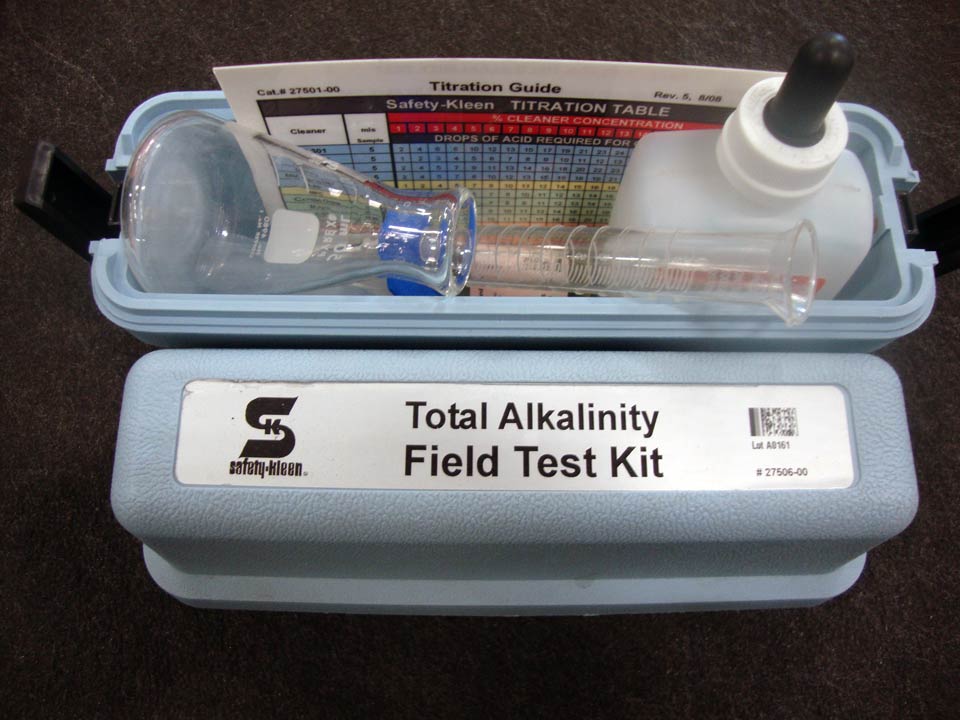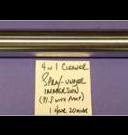What’s Titration and Why Should I Care?
When dealing with aqueous parts cleaning, it’s important to control the concentration of your aqueous solution in order to achieve ideal cleaning status and extend your bath life.
Although aqueous products have a lot of variables to control, they tend to offer greater flexibility which makes all of the additional attention to detail worthwhile.
If you recall from earlier posts, concentration is one of the four essential elements of the aqueous cleaning process. (The others are temperature, agitation, and time).
Since most aqueous cleaners are not used at 100% concentration, and are instead mixed with a certain amount of water, it is important to maintain the recommended concentrations to ensure your parts are getting cleaned safely and efficiently.
This is where titration plays a critical role – Titration is the best way to monitor the aqueous chemistry concentration of your parts washer to help maintain optimal performance.
Titration is where you use a known chemical, the titrant, to figure out how much of the aqueous cleaning chemistry is in the bath sample you have. By knowing the concentration of your titrant, you can calculate the concentration of your aqueous cleaning chemistry by carefully measuring how much of the titrant it takes to react with your bath sample.
One of the more common titrations done is the acid-base neutralization. It is also the type of titration used to measure the concentrations of the ArmaKleen aqueous alkaline cleaners.
Acid-base neutralization titrations can be easily set up into test kits. Having a test kit for your shop is the easiest way to provide you with what you need to determine your aqueous cleaning chemistry concentrations of your aqueous parts washers.
So, what happens if I don’t titrate?
Since a bath’s concentration is dependent on other variables like the amount of agitation applied or water temperature, each element can be affected. Each of the variables has a high and low limit for peak use. If you encounter a parts-washing problem, it is important to check temperature and concentration first.
So, for example, if your concentration is too low, you may experience issues like corrosion, a certain odor, or simply notice your parts aren’t getting clean. On the other hand, if your concentration is too high, you may notice some staining, a white residue on your parts after they dry, or excess foaming of the cleaner in your aqueous parts washer.
Don’t be nervous, titration itself isn’t an incredibly difficult task. It just has to be done carefully and consistently.
 Titration kits typically include measuring tubes, mixing bottles, reagents, and detailed instructions. To titrate, you’ll need to carefully collect your aqueous bath sample, mix in the color indicator and then carefully add measured amounts of your titrant. The color indicator allows you to see when the titrant has completely reacted with your aqueous bath sample. In the case of an acid-base neutralization titration the color indicator changes color when all of the alkalinity in the sample is reacted with the acidic titrant.
Titration kits typically include measuring tubes, mixing bottles, reagents, and detailed instructions. To titrate, you’ll need to carefully collect your aqueous bath sample, mix in the color indicator and then carefully add measured amounts of your titrant. The color indicator allows you to see when the titrant has completely reacted with your aqueous bath sample. In the case of an acid-base neutralization titration the color indicator changes color when all of the alkalinity in the sample is reacted with the acidic titrant.
The titration kits you can purchase from your local Safety-Kleen branch are already pre-assembled for determining the concentration of ArmaKleen aqueous cleaners. The kits have titration guides that easily instruct you with everything you need to know including the sample size for each ArmaKleen aqueous chemistry that could be in your parts washer and step by step instructions on how to perform the titration for that specific chemistry.
If you need help getting started, Armakleen’s resident aqueous chemist, Andy Logan, put together an instructional video entitled “How to Titrate your Aqueous Parts Cleaner Bath,” which walks users through the entire process.
- Log in to post comments




